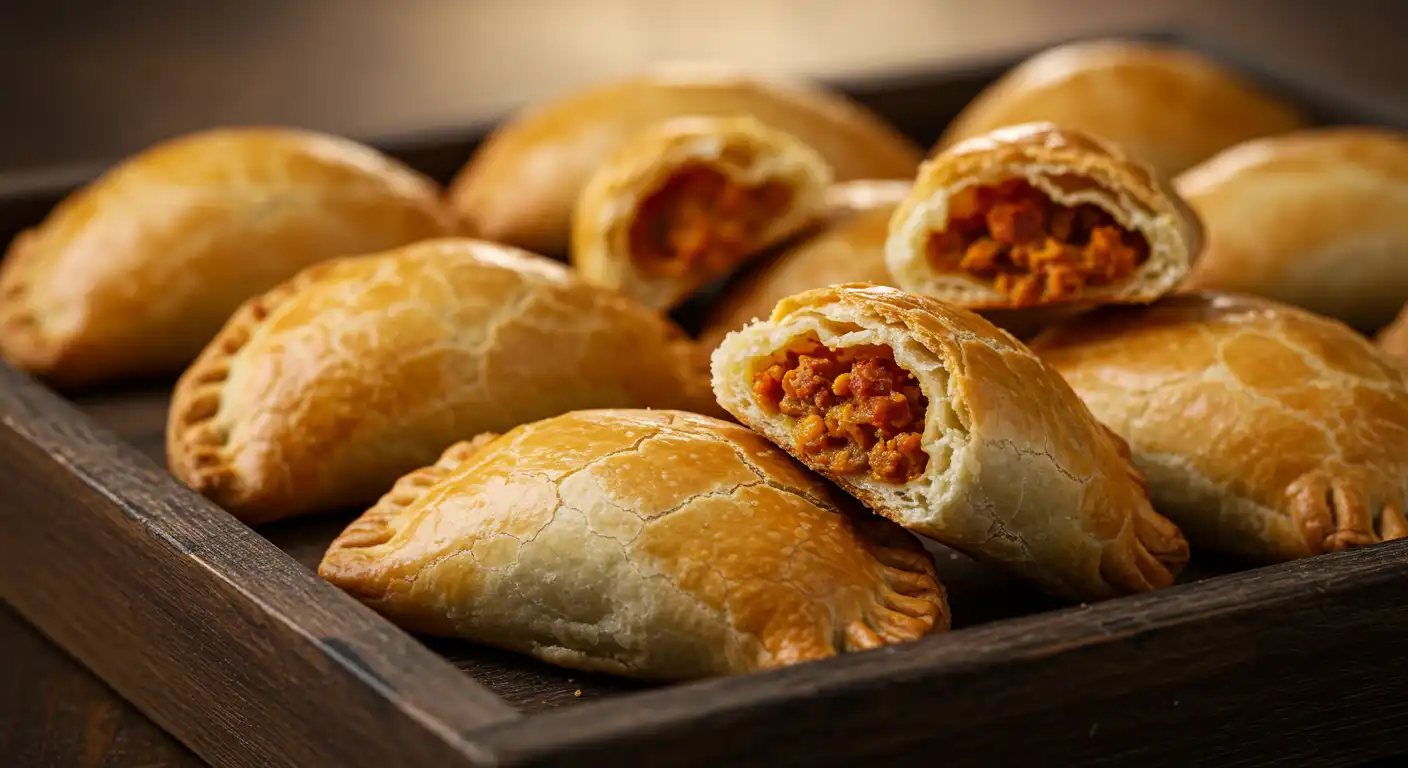Introduction: Empanadas: A Global Journey of Flavors and Traditions
Empanadas, those delectable, hand-held pockets of flavor, have captivated taste buds across the globe with their tender dough and savory or sweet fillings. Many who have experienced these pastries often wonder: “What ethnicity makes empanadas?” The answer, while seemingly simple, opens up a world of rich culinary history. Empanadas boast multicultural roots, with significant influence from both Latin American and Spanish cuisines. Today, these versatile turnovers appear in countless countries, often sharing a similar crescent-like shape, yet each reflecting distinct local traditions and culinary nuances.
While their precise origins remain a topic of debate, historians often trace them back to the Galician region of Spain. Over time, seafaring traders and immigrants introduced empanadas to Latin America, where the dish truly blossomed and diversified. With each region adding its own personal touch, the mere mention of “empanada” today can evoke the distinct flavors of Argentina, the vibrant spices of Colombia, or the subtle sweetness of Filipino versions. These pastries offer an incredible variety of fillings, from the robust spice of beef to the tropical sweetness of guava, providing a delicious glimpse into ancestral customs and culinary creativity.
Therefore, understanding what ethnicity makes empanadas is not a simple question, but rather an exploration of cultural blending and the dynamic nature of food traditions. In this article, we will delve deep into the historical context of empanadas, explore a diverse range of recipes, uncover nutritional information, and even touch upon related pastries like pastelitos. Ultimately, we aim to inspire you with new ways to incorporate these global delights into your own kitchens. So, keep reading to embark on an in-depth journey into the world of empanadas, and discover how they continue to evolve and unite food lovers around the world.
The Historical Path of Empanadas: A Culinary Journey
Empanadas hold a special place in culinary history, with a fascinating journey that spans centuries and continents. It’s widely believed that the empanada’s origins can be traced back to Spain. The larger Galician empanadas, which were more like large pies sliced into portions, predate their smaller, handheld cousins that we often enjoy today. These early empanadas laid the foundation for the culinary phenomenon that would soon spread across the globe.
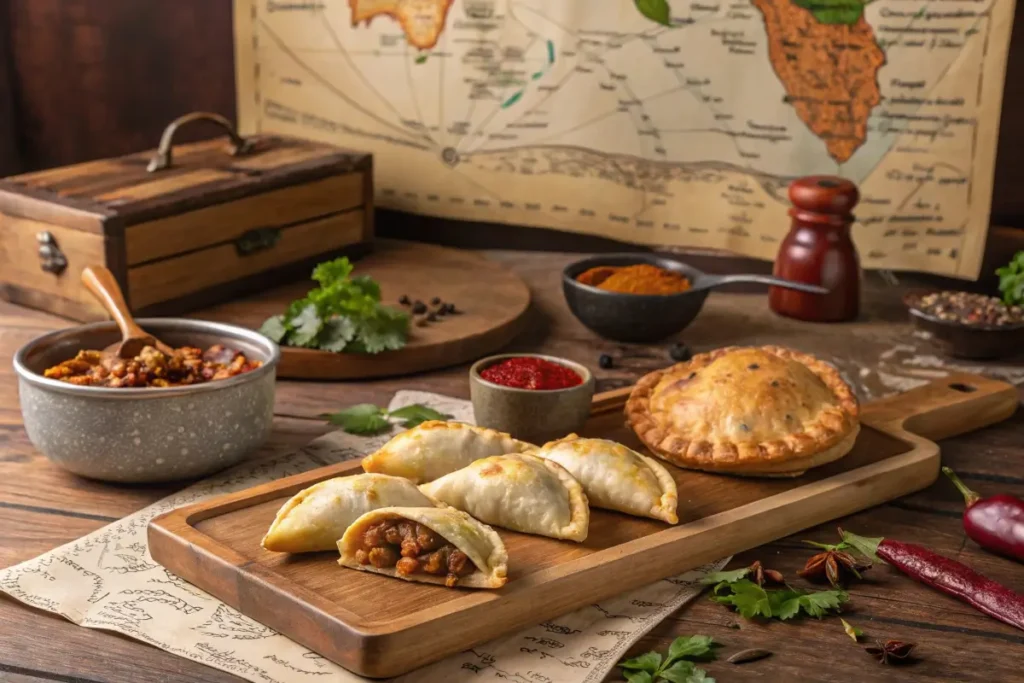
As explorers and immigrants traversed continents, they carried recipes and culinary traditions with them, including that of the empanada. This led to the widespread adoption and adaptation of empanadas throughout Latin America, each country putting its own unique stamp on the dish.
In Mexico, for instance, empanadas are sometimes crafted with corn dough and feature fiery salsas, creating a distinctly bold flavor profile. In Argentina, traditional empanadas often incorporate wheat dough and feature regional spices like cumin, offering a different taste and texture. Colombian empanadas are frequently filled with a blend of meats, potatoes, and vegetables, showcasing the country’s diverse produce. The Philippines even have their own unique version, often incorporating a hint of sweetness, reflecting their own unique blend of cultural influences. Hence, when considering “what ethnicity makes empanadas,” it is essential to appreciate how the dish blends Spanish roots with diverse local adaptations.
In modern times, the methods used to prepare empanadas have also evolved. Today, they can be baked for a healthier option or fried for a traditional crispiness, allowing cooks to adapt them to their specific preferences. Whether baked or fried, the pastry shell remains a cornerstone of the dish, and the variety of dough bases demonstrates the incredible adaptability of the empanada. Some regions prefer wheat flour, while others opt for cornmeal or even plantains, showcasing the diverse culinary creativity that has shaped this dish.
Culinary Connections: Empanadas as a Global Phenomenon
When we explore the question, “What ethnicity makes empanadas?” we find that while their roots can be traced back to Spain, these savory pastries have become famously associated with the vibrant culinary traditions of Latin America. However, the story doesn’t end there. Empanadas have taken root in various European and even African cuisines, a testament to their incredible versatility and universal appeal.
The beauty of empanadas lies in how each culture has embraced and adapted the basic concept to suit local tastes and ingredients. For example, Brazilian empanadas, often called “pastéis,” are known for their thinner and crispier crusts, showcasing a unique texture. In Puerto Rico, the term “empanadilla” is often used, and their versions may feature different types of fillings and regional spices. These variations illustrate the dynamic nature of empanadas and how they evolve to reflect local culinary preferences.
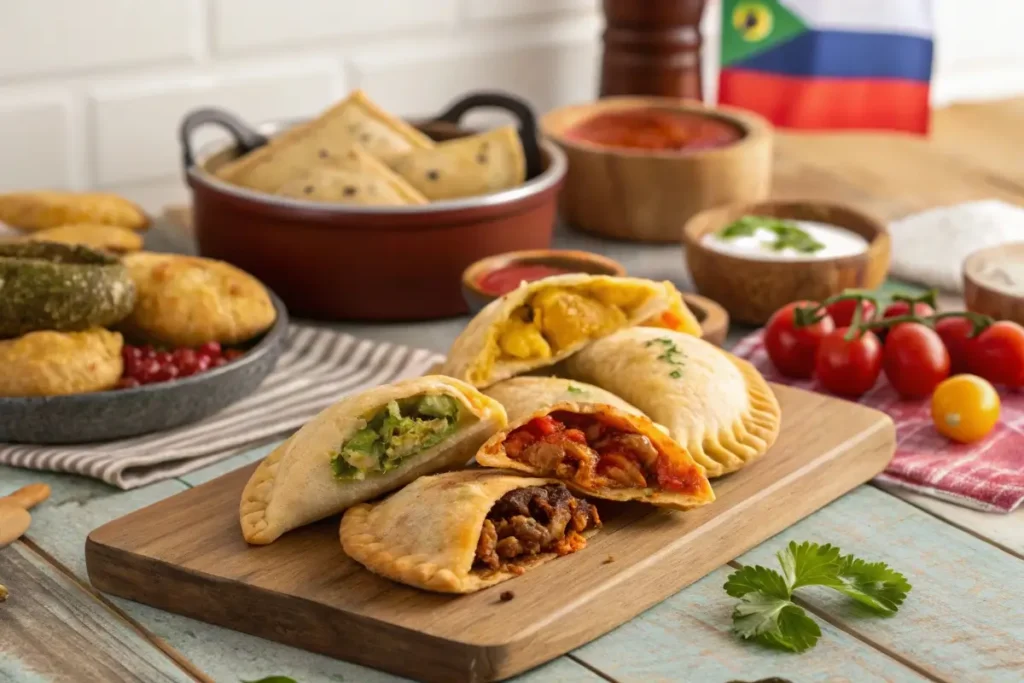
A Fun Fact: In Argentina, different provinces have developed specialized folding techniques that serve as a sort of edible code. Some folds denote beef fillings, while others signify spicier variants or different ingredients. Additionally, some bakers even mark the empanada crimp in uniquely ornamental ways, creating beautiful braids or patterns along the seam. These creative approaches highlight how something as seemingly simple as an empanada can become a cherished and symbolic emblem of local identity.
Cultural Variations and Filling Options
Empanadas celebrate infinite combinations of fillings. Because different cultures prepare them, you will see a wide range of ingredients. Below are a few popular variations:
- Argentinian Empanadas
Typically stuffed with ground beef, onions, and seasonings. Some include boiled eggs, olives, and peppers. They frequently come from family recipes passed down through generations.
In addition, Argentinian empanadas are often baked. This method yields a golden exterior while keeping the interior moist. - Chilean Empanadas
Often called empanadas de pino. They contain ground or shredded beef, onions, raisins, and sometimes hard-boiled eggs. They are generally baked and have a slightly sweet yet savory taste. - Colombian Empanadas
Usually made with corn flour dough. Fillings can include beef, chicken, or potatoes. In many cases, these are fried, resulting in a crispy outside layer.
In contrast to Argentinian versions, the distinct corn shell adds texture and flavor. - Mexican Empanadas
Feature a variety of fillings, from shredded chicken in tomato sauce to sweet fillings like fruit jam. These can be served as desserts or savory appetizers. Many street vendors sell them, making them a staple snack. - Caribbean Empanadas
Commonly referred to as pastelillos or empanadillas. They are frequently stuffed with spiced ground meat or local seafood. For example, crab or shrimp might appear in coastal areas.
After exploring the fascinating origins and global appeal of empanadas, let’s take a quick break with a little humor. After all, what’s a delicious treat without a little fun?
- Joke: “Why did the empanada go to the dentist? Because it had a filling that just wouldn’t quit!”
Empanadas: A Global Tapestry of Culinary Heritage
When addressing the question, “What ethnicity makes empanadas?” the answer is far more complex and intriguing than a single origin. While Spaniards might argue that the roots of empanadas lie in their homeland, various Latin American nations feel a stronger sense of ownership due to their unique and diverse local adaptations. Even Filipino families can also lay claim to a piece of the empanada story, thanks to centuries of Spanish influence that shaped their culinary traditions.
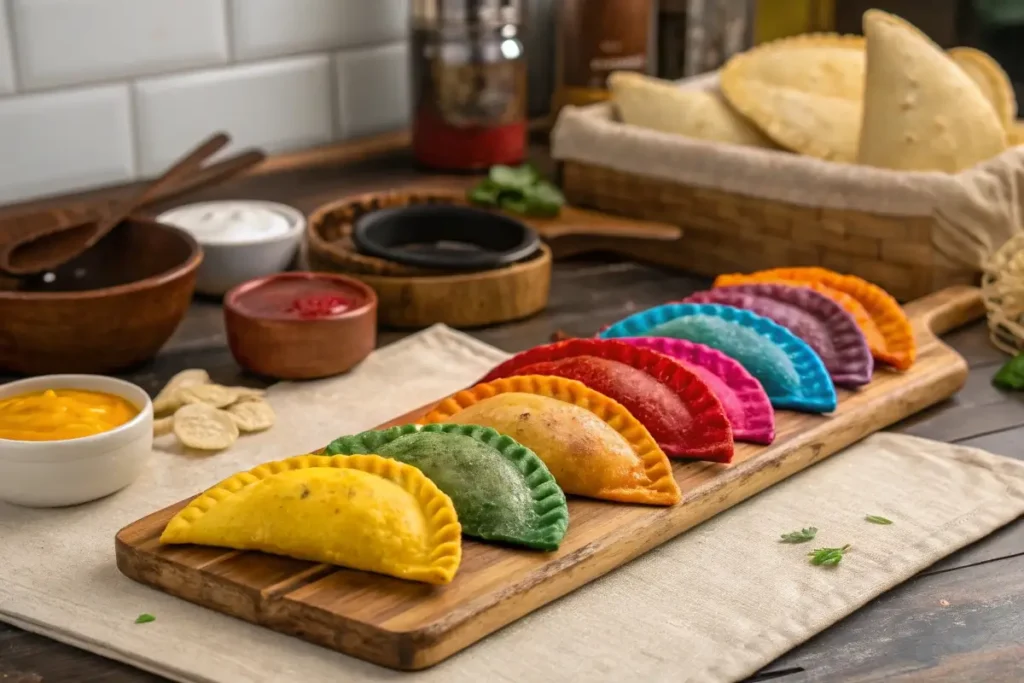
However, the essence of the empanada transcends any single ethnicity or origin. In reality, they stand as a unifying culinary symbol, a delicious example of how food can bridge continents and eras. These pastries have a remarkable way of bringing people together through shared comfort and a celebration of creativity in the kitchen. Their incredible adaptability makes them appealing to people from diverse cultural backgrounds.
While certain regional differences exist, with variations in dough, fillings, and cooking methods, the overarching theme remains the same: a flavorful filling encased in a delicious, portable dough. This simple yet brilliant concept of comfort and convenience is universally embraced. Therefore, no single group can exclusively claim ownership of the empanada tradition. Rather, each region’s unique style and approach contributes to the rich and beautiful global tapestry that defines the empanada today.
Empanada Dough Techniques and Tips
Crafting the perfect empanada dough influences the entire outcome. First, you’ll want to select the right flour. Many recipes suggest all-purpose wheat flour for a flaky texture. Others go for masa harina (corn flour), delivering a crisp, corny bite. If you aim for a gluten-free version, you can test blends made from rice flour, tapioca starch, and potato starch.
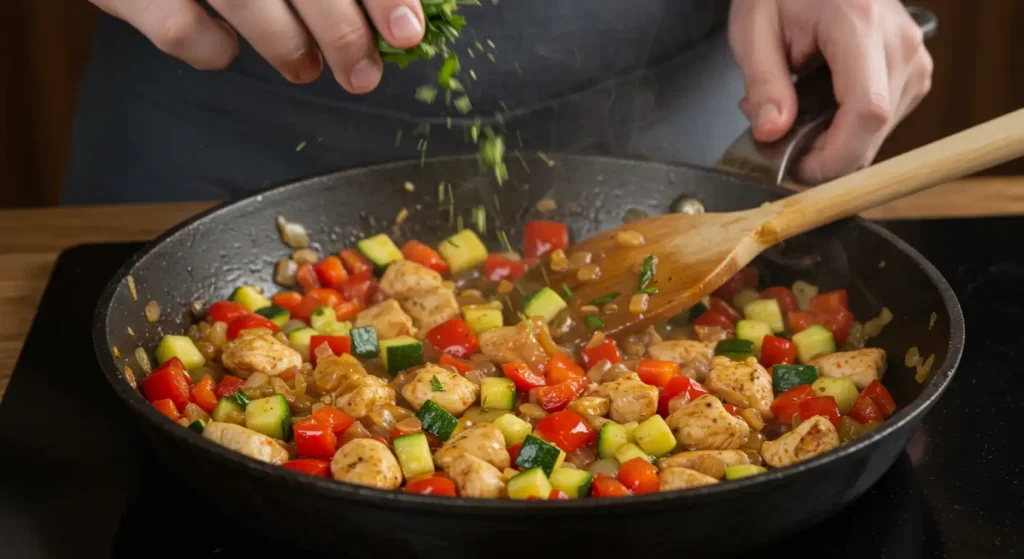
Second, cold fats like butter or shortening help create tender dough layers. Adding a bit of water binds everything together. If you want a healthier approach, some people use vegetable oil. Because the dough is so versatile, each chef decides on personal preference.
Third, resting the dough is essential. Place it in the fridge for 30 minutes before rolling. This step reduces stickiness and makes it easier to handle. In addition, it ensures the dough won’t shrink while baking. Once rolled, cut circles with a round cutter or even a small bowl.
Finally, it’s time to fill the empanada. Be careful not to overstuff. Overfilling might cause the dough to tear or leak during baking. Gently seal the edges by pressing them together. You can also fold them using a crimping technique. For extra flair, you could use a fork to create decorative ridges.
Baking vs. Frying Empanadas: Exploring the Two Cooking Methods
When it comes to preparing empanadas, the choice between baking and frying can significantly impact both the flavor and the nutritional profile of the final product. Both methods have their unique advantages, and understanding the differences can help you choose the best approach for your preferences.
Baking Empanadas: A Healthier Approach
Baking presents a generally healthier alternative to frying. It allows you to achieve a beautifully golden-brown exterior while minimizing oil absorption. The result is an empanada with a satisfyingly crisp crust but with reduced fat content. To further enhance the appearance and color of baked empanadas, consider brushing them with a light egg wash before baking. This will help them develop an attractive, shiny crust that looks as good as it tastes.
Frying Empanadas: A Classic Indulgence
On the other hand, frying yields a distinctively crisp and satisfyingly crunchy texture that many find irresistible. Traditional Latin American street food often features fried empanadas, and this method can provide that authentic taste. However, it’s worth noting that frying tends to add extra calories and fat due to oil absorption. If you choose to fry your empanadas, you can minimize oil intake by carefully draining them on paper towels after cooking.
The Best Method is Your Preference
Ultimately, both baking and frying have their own distinct merits. A great way to decide which style you prefer is to experiment with both methods. Consider making a small batch of empanadas using the baking method and another batch using the frying method. Compare the textures, flavors, and overall experience, and decide which version best suits your palate. The choice is yours!
Nutritional Data Table
Below is a simple nutritional breakdown for one medium-sized chicken empanada (roughly 80g), prepared with a wheat-based dough and baked rather than fried:
| Nutrient | Amount (Per 1 Empanada) |
|---|---|
| Calories | 180 |
| Carbohydrates | 20g |
| Protein | 10g |
| Total Fat | 7g |
| Saturated Fat | 2g |
| Fiber | 2g |
| Sodium | 290mg |
| Sugars | 1g |
These figures are approximate. Many factors can alter them, including the dough composition and filling specifics. In addition, portion sizes vary across regions.
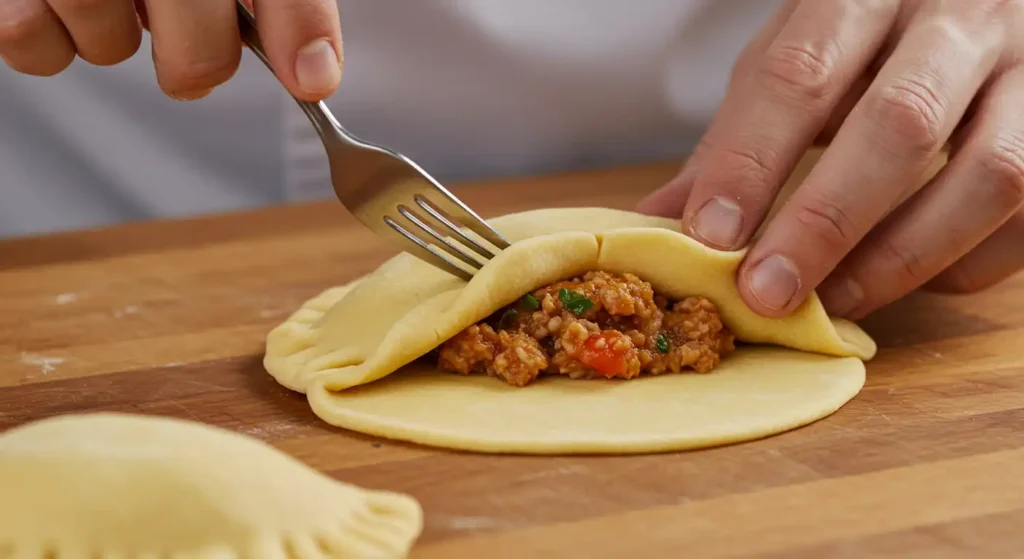
Crafting Homemade Empanadas: A Step-by-Step Guide
Creating empanadas in your own kitchen is not only a fun and rewarding experience, but it also offers the freedom to control your ingredients and customize your fillings to your exact liking. This means you can incorporate more vegetables, adjust spice levels, or reduce sodium content, tailoring your empanadas to fit your unique dietary needs and preferences. Below is a straightforward, step-by-step guide that will walk you through the process:
Step 1: Preparing the Empanada Dough: The Foundation of Flavor
- Combine Dry Ingredients: In a large mixing bowl, whisk together 2 cups of all-purpose flour with 1 teaspoon of salt.
- Add Chilled Butter: Add 1/2 cup of cold, unsalted butter, cut into small cubes, to the dry ingredients. Using a pastry blender or your fingertips, work the butter into the flour until the mixture resembles coarse crumbs.
- Incorporate Cold Water: Gradually add 1/2 cup of ice-cold water to the mixture, a tablespoon at a time, and mix until the dough just comes together. Avoid overmixing.
- Knead and Chill: Knead the dough briefly on a lightly floured surface for a minute or two. Form it into a disc, wrap it in plastic wrap, and refrigerate for at least 30 minutes. This resting time is crucial for the dough to relax and become easier to roll out.
Step 2: Creating Your Empanada Filling: A World of Possibilities
- Sauté Aromatics: In a skillet over medium heat, sauté 1 chopped onion and 2 cloves of minced garlic in 1 tablespoon of olive oil until fragrant.
- Add Protein: Introduce your preferred protein (such as 1 pound of ground chicken or turkey, or 1 pound of diced mushrooms for a vegetarian option) to the skillet. Cook until the protein is browned or the mushrooms are tender.
- Season with Spices: Add 1 teaspoon of salt, ½ teaspoon of black pepper, 1 teaspoon of ground cumin, and ½ teaspoon of paprika for an authentic Latin flair. Feel free to add other spices, like chili powder or oregano, to suit your taste.
- Simmer and Set Aside: Add 1/4 cup of water to the skillet, and simmer until the liquid has mostly evaporated. Remove the filling from the heat and set it aside to cool slightly.
Step 3: Assembling the Empanadas: Shaping Your Creations
- Roll Out the Dough: On a lightly floured surface, roll out the chilled dough to about 1/8 inch thickness.
- Cut Circles: Using a cookie cutter or a bowl, cut out circles of dough (approximately 4-5 inches in diameter).
- Fill the Dough: Place a spoonful of the prepared filling (about 2-3 tablespoons) in the center of each circle.
- Fold and Seal: Moisten the edge of the dough circle with a bit of water, fold it over to create a half-moon shape, and press the edges together to seal.
- Crimp the Edges: Crimp the edges of the empanadas with a fork or your fingers to create a decorative seal.
Step 4: Cooking Your Empanadas: Baked or Fried to Perfection
- Baking: If baking, preheat your oven to 375°F (190°C). Place the empanadas on a baking sheet and bake for 20-25 minutes, or until they are golden brown.
- Frying: If frying, heat about 1 inch of oil in a deep skillet or pot to 350°F (175°C). Carefully fry the empanadas in batches for 3-5 minutes on each side, or until they are golden brown and crispy.
Step 5: Serving Your Homemade Empanadas: A Delicious Feast
Let the cooked empanadas cool slightly before enjoying them. They can be paired with your favorite toppings, like:
- Fresh salsa
- Creamy guacamole
- A zesty yogurt-based sauce
Enjoy your delicious, homemade empanadas!
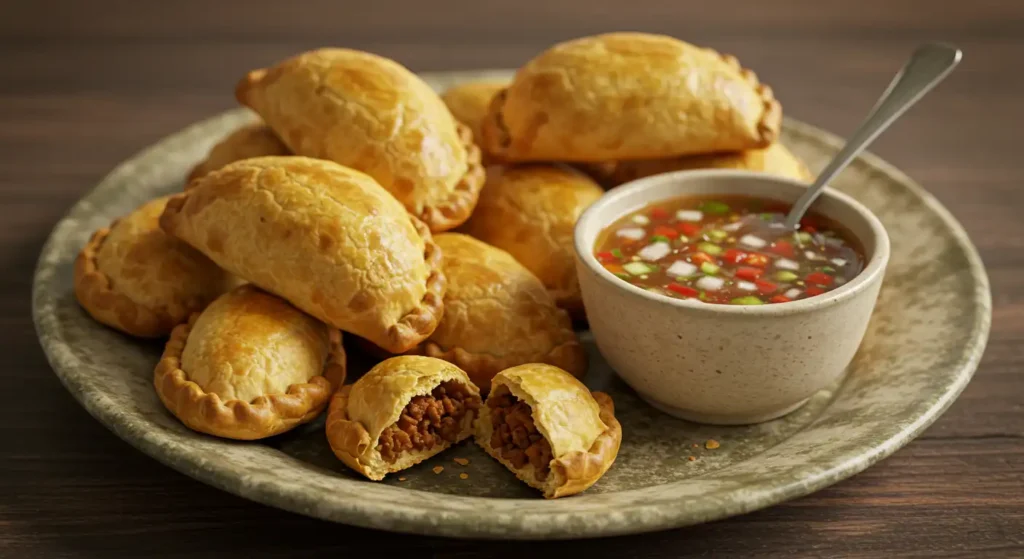
Conclusion: Celebrating the Global Journey of Empanadas
When we ask, “What ethnicity makes empanadas?” the answer reveals a rich tapestry of culinary traditions. While no single culture can claim sole ownership, various societies have lovingly embraced and adapted these savory pastries over time, each contributing their unique flair. Empanadas have journeyed far from their Spanish pie origins, blossoming into cherished snacks throughout Latin America. Even the Philippines, among others, adopted the empanada under Spanish colonial influence. This illustrates the power of food to transcend borders.
In conclusion, while the origin story of the empanada is indeed fascinating, the true delight lies in the experience of savoring them. Whether you prefer them baked or fried, spicy or mild, you are invited to enjoy a portable culinary masterpiece. From the dough to the filling, each empanada represents a journey through tradition and heritage. So, gather your ingredients, experiment with new flavors, and celebrate the global tapestry that has shaped these iconic pastries. With every bite, you’re partaking in a delicious cultural exchange.
FAQs
What Shapes Are Pastelitos?
Pastelitos commonly appear in small, square or rectangular shapes. In contrast to round empanadas, these shapes differentiate pastelitos visually. Some pastelitos might have more decorative edges, showcasing local creativity. They can also feature fluted or twisted edges. However, shapes can vary by region or personal preference.
What Are Pastelitos Made Of?
Pastelitos typically contain fruit preserves or sweet fillings. For instance, guava paste or dulce de leche is common in some Latin American regions. Others might opt for savory fillings, like cheese or spiced beef. Despite differences in ingredients, pastelitos often feature a flaky, puff-pastry-like dough. This dough can produce a layered, airy texture. Therefore, pastelitos are a popular dessert or snack item, especially at festivals and family gatherings.
